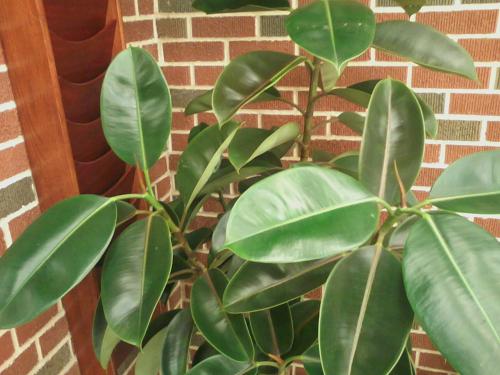Most of the favorite houseplants are grown for dense evergreen foliage. Stems of Chinese evergreen, anthuriums, bromeliads and most ferns should never be seen. Yet, there are many houseplants that grow like small trees or coarse vines. Various ficus, dracaenas and philodendrons can get too big for their situations if not pruned. Palms can not be pruned down, so can only be moved or given to friends with higher ceilings.
Pruning and discarding overgrown but slowly growing stems seems like such a waste. Technically, stems from almost any overgrown houseplant can be rooted as cuttings. In reality though, most rot before they develop roots.
‘Air layering’ is probably the most efficient technique of propagation of houseplants from overgrown stems. It involves rooting the stems while still attached to the original plant. In the end, an unwanted stem gets pruned away as a freshly rooted new plant.
Air layering needs a bare and manageable section of stem that is at least a few inches long. This section does not necessarily need to be where the stem will eventually get pruned away from. It can be a bit higher (or farther out from the origin) if a shorter copy (new rooted plant) is desired. The extra length of stem in between can be pruned out when the copy gets separated.
The stem should be notched up to a third of the way through. This notch will develop roots better if rubbed with rooting hormone. A big wad of wrung out damp sphagnum moss a bit larger than a softball then gets wrapped around the notch, and then wrapped in plastic film. A cut up freezer bag should work nicely. The bag should be held in place with plant tie tape or something as simple as electrical tape, wrapped firmly around the stem above and below the sphagnum moss. Smaller stems can get smaller wads of sphagnum moss.
Unfortunately, there is no way to disguise the unappealing wrapped moss during the few months that may be needed for roots to develop. Eventually, roots become visible through the plastic, or the moss becomes firm with roots. The newly rooted stem can then be cut below the roots, unwrapped and potted as a new copy of the old houseplant. The stub below can be pruned away, or left to develop new shoots.
highlight: rubber tree
Pruning a rubber tree, Ficus elastica, in the home takes a bit of acrobatics, since any wound immediately bleeds staining white latex. While pruning with one hand, the other hand must catch the latex with a rag. A third hand is needed to catch the bleeding piece of stem that gets pruned away. To make things more complicated, all three hands should avoid the potentially caustic latex. Even if it is harmless to the skin, it is a painful irritant if it gets into the eyes.
Young trees have larger glossy leaves that may be as long as a foot and half as broad, although most are about half as long and broad. Many modern cultivars have variegated or bronzy foliage. Where it gets enough sunlight as a houseplant, rubber tree will eventually need to be pruned for confinement. After all, in the wild, it can get more than a hundred feet tall and almost two hundred feet tall, with trunks more than six feet wide! In the garden, it needs shelter from frost. Aerial roots can develop in humid environments.






